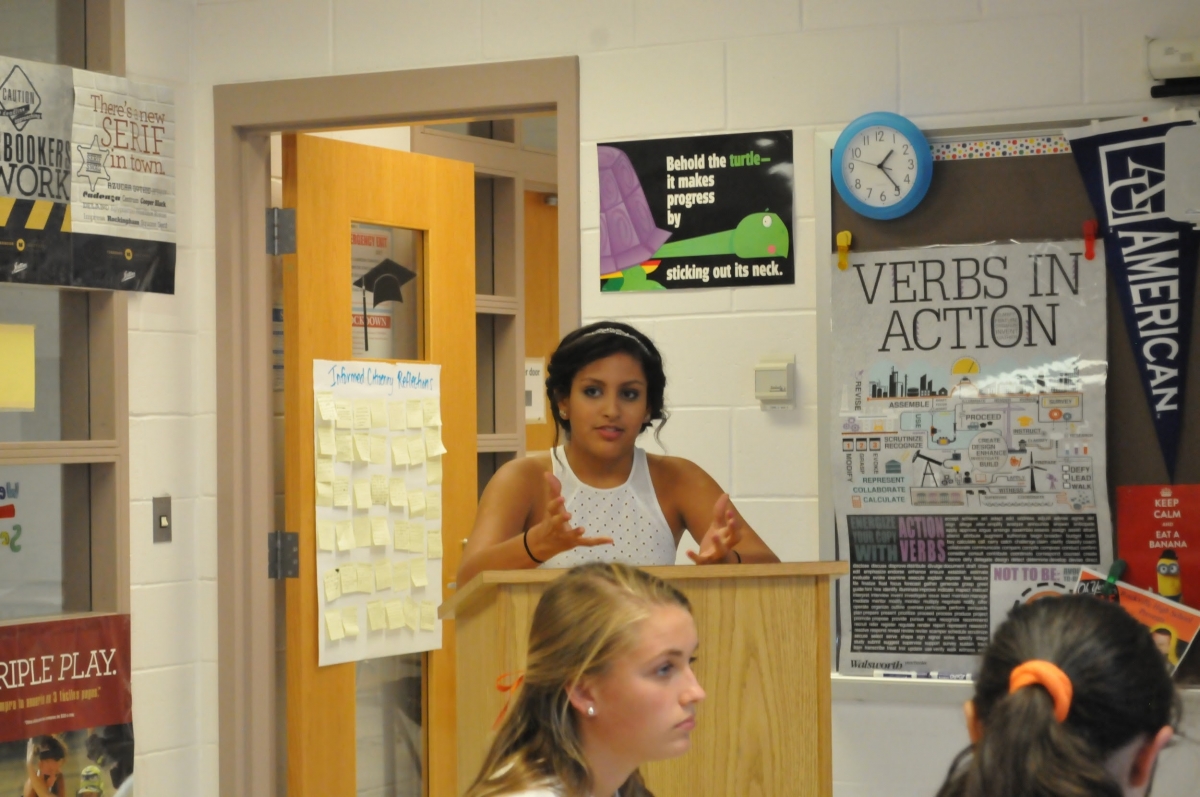In a previous blog post, “Engaging students to create social change,” I shared how to prepare students to go beyond critical thinking and discussion, to take action to better their communities and the world. The post included some new learning from the Teaching & Learning Conference, and later in the year, I decided to implement some of that learning in my AP Language and Composition class. There are take-aways that might help others prepare for the year ahead.
One of the central goals for that class is for students to grow as informed citizens of their community. They respond to editorials by analyzing rhetorical strategies and providing their opinions on the issue. I want my students to leave high school prepared for the world in which they live, identifying and understanding issues that affect them. What kind of knowledge do our students need to advocate for themselves? What tools do they need to implement change and improve their lives?
Some of my students understand international conflicts and events in part because of their background and experiences of living in different places, while others have no knowledge outside of their own home. Their varying levels of awareness inform my work with them.

Every couple of weeks, students present one of their analyses. They examine local and global issues that matter to them, from topics ranging from the economy in China to presidential elections, violence against teenagers, school testing, cyberbullying, terrorist attacks, women’s rights in the military, homelessness, gun laws, and more. In their presentations and our discussions, students connect with one another by identifying similar core values, and they establish a level of respect for the other person’s knowledge. When a student disagrees with the presenter, the presenter provides specific examples for rebuttal; their communication maintains a level of respect that enables them to engage in a conversation. By reading, analyzing, and presenting current events, students gain confidence in their own opinions. They are educating each other.
One of my take-aways from the session at Teaching and Learning is for my students to learn how to use social media to create social change. Teens are no different from adults in some regards: we use social media because it’s interactive and puts us in control of information they want to read. Social media can encourage communication of ideas and widens one’s ability to learn information from multiple perspectives. People tend to trust their friends and are more likely read posts shared from friend to friend. For my students’ last “Informed Citizenry” presentation, students investigated and researched a topic with current importance in society. After analyzing and sharing specific examples to support their positions, they presented solutions and plans of action to address those issues. This time, they had to identify how groups of individuals could organize using social media to create change.
In front of their peers, my students discussed different ways they could create awareness of current issues to create change. One student stated, “we can organize grass root coalitions with parents or raise money for a cause.” Another student stated, “I can personally create social change by educating my peers on specific issues.” One of my students, Maggie, emphasized that teenagers have to know how their own lives will be affected. Scott discussed the importance of tolerance: “The completely singular thing that would solve problems is tolerance. Convince people of that.” Other students discussed using hashtags on social media, creating petitions, and sharing images and videos. They all stressed this: we can raise awareness by spreading a message to inspire people to change on one’s own accord.
 After applying what I learned from Teaching and Learning, in reading what my students have written, and in watching my students present their Informed Citizenry assignments, I’ve seen my students shift from discussing issues to identifying solutions and proposing alternatives. They moved away from “I agree” and “I disagree” statements to making concrete connections between texts and their observations. They demonstrate rhetorical strategies in their writing that are aimed at persuading others of their opinions, and they no longer hesitate about doing so. As I know from my National Board certification, the process of analyzing and reflecting creates change. Students’ analysis and reflection of their world will empower them.
After applying what I learned from Teaching and Learning, in reading what my students have written, and in watching my students present their Informed Citizenry assignments, I’ve seen my students shift from discussing issues to identifying solutions and proposing alternatives. They moved away from “I agree” and “I disagree” statements to making concrete connections between texts and their observations. They demonstrate rhetorical strategies in their writing that are aimed at persuading others of their opinions, and they no longer hesitate about doing so. As I know from my National Board certification, the process of analyzing and reflecting creates change. Students’ analysis and reflection of their world will empower them.
One student in particular said something that still resonates with me: “We can create change by telling people to ‘click less and do more.’ Saying you agree with something does not do nearly as much as actually doing something.”
Resources:
